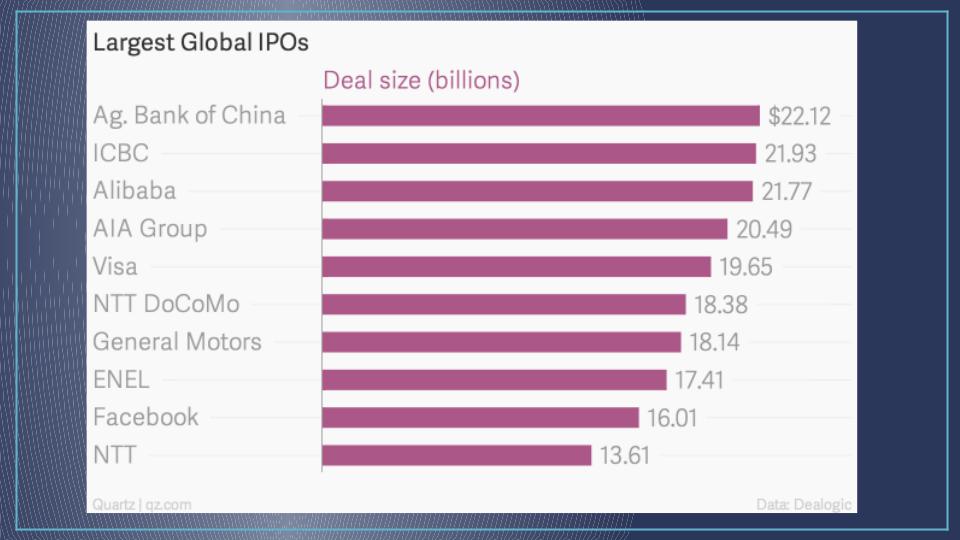

IPO -
Initial
public
offering

Plan
1.What is an IPO. 2.The stages of IPO.
3.Advantages and disadvantages

What is an IPO?
Initial public offering (IPO) or stock market launch is a type of public offering in which shares of a company usually are sold
to institutional investors that in turn sell to the
general public, on a securities exchange, for
Initialthepublicfirst offeringstime. are mostly used by companies to:
•raise the expansion of capital,
•possibly to monetize the investments of early private investors
•become publicly traded enterprises.

Stages of IPO
1.The Underwriting Process
2.Quiet period
3.Pricing of shares
4.The “road show” 5.Delivery of shares

The Underwriting Process
IPOs generally involve one or more investment banks known as "underwriters". The company offering its shares, called the "issuer", enters into a contract with a lead underwriter to sell its shares to the public. The underwriter then approaches investors with offers to sell those shares.
A large IPO is usually underwritten by a "syndicate" of investment banks, the largest of which take the position of "lead underwriter". Upon selling the shares, the underwriters retain a portion of the proceeds as their fee.

The quiet period
An S-1document is the registration form required by
the Securities and Exchange Commission (SEC). It's a legal document that tells the world about the company's plans for its proceeds, its business model, the competition, and its corporate governance, risks, and executive
The quiet period is the period of time following the filing of the company's S-
1 but before SEC staff declare the registration statement effective. During this time, issuers, company insiders, analysts, and other parties are legally restricted in their ability to discuss or promote the upcoming IPO.

The “road show”
“Road show," - a tour to meet investors, which can occur 21 days after the public S-1 is filed.

Pricing of shares
A company planning an IPO typically appoints a lead manager, known as a book runner, to help it arrive at an appropriate price at which the shares should be issued.
The price of shares depends on the company, the success of the road show, demand, and, most importantly, current market conditions. Underwriters try to reach an offering price that is low enough to stimulate interest in the stock, but high enough to raise an adequate amount of capital for the company.

Delivery of shares |
The securities are sold on the stock market (e. g. New York Stock |
Exchange or the NASDAQ) and the money is collected from |
investors |

Advantages of IPO
An IPO provides several benefits to the previously private company:
Enlarging and diversifying equity base
Enabling cheaper access to capital
Increasing exposure, prestige, and public image
Attracting and retaining better management and employees through liquid equity participation
Creating multiple financing opportunities: equity, convertible debt, cheaper bank loans, etc.

Disadvantages of IPO
There are several disadvantages to completing an initial public offering:
oSignificant legal, accounting and marketing costs
oRequirement to disclose financial and business information
oMeaningful time, effort and attention required of management
oRisk that required funding will not be raised
oPublic dissemination of information which may be useful to competitors, suppliers and customers.
oLoss of control and stronger agency problems due to new shareholders

